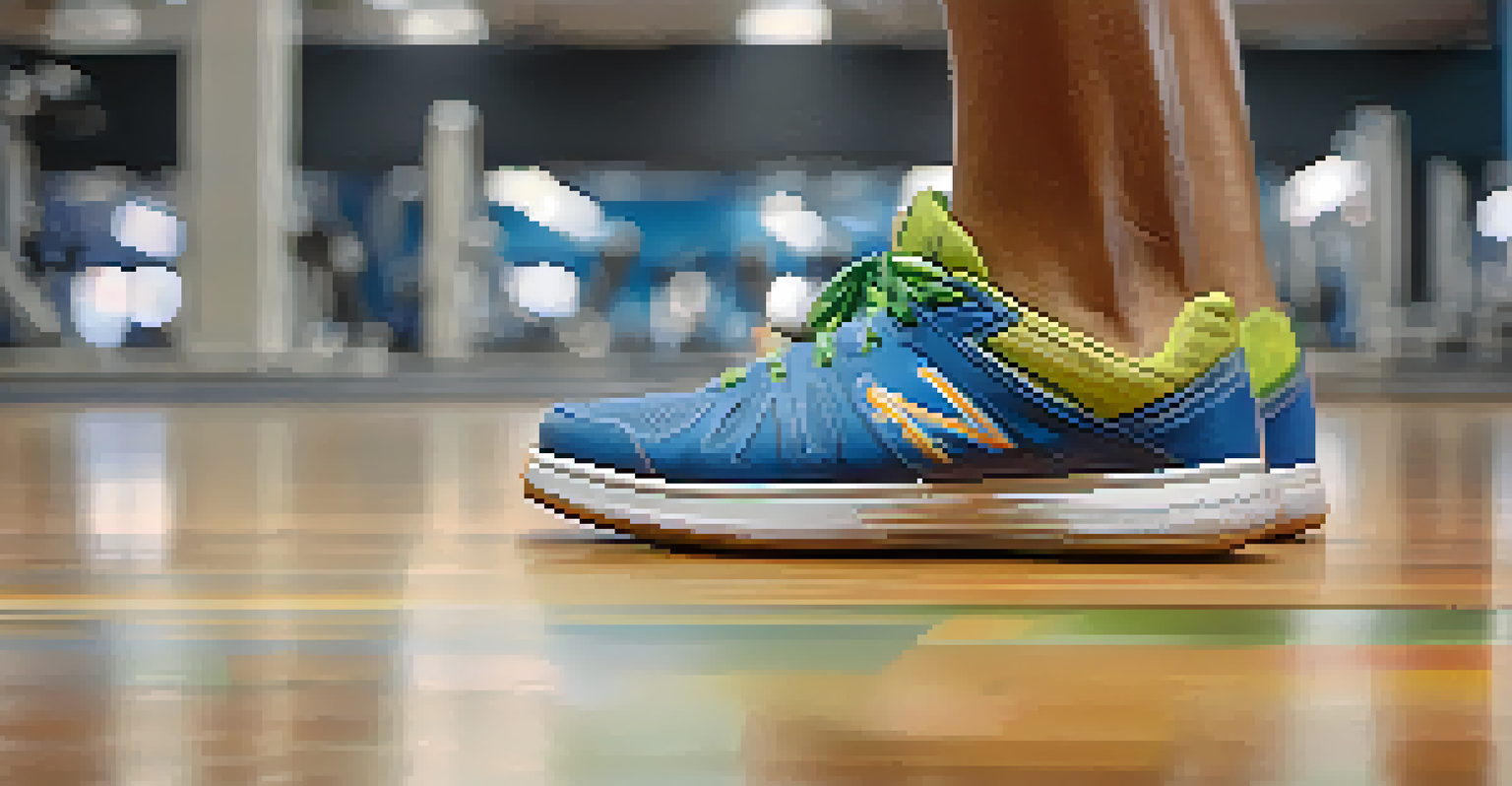Plyometrics for Bodybuilders: Building Explosive Power

Understanding Plyometrics: What Are They?
Plyometrics, often referred to as jump training, focus on explosive movements. These exercises involve a quick stretch of the muscles followed by a powerful contraction, harnessing the body's natural ability to generate force. Think of it as a spring: the more you compress it, the more energy it releases when you let it go.
Jumping is the best exercise to achieve explosive strength and power.
For bodybuilders, incorporating plyometrics can lead to significant improvements in strength and power output. This explosive training method complements traditional bodybuilding techniques, enhancing overall performance. By integrating these dynamic movements, you're not just pushing weights; you're training your body to move efficiently and powerfully.
Common plyometric exercises include box jumps, depth jumps, and plyometric push-ups. These activities can be tailored to fit various fitness levels, making them accessible for anyone looking to boost their training regimen. It's all about finding the right movements that challenge your body while supporting your muscle-building goals.
The Benefits of Plyometrics for Bodybuilders
Plyometrics offer a range of benefits, especially for bodybuilders aiming for explosive strength. First and foremost, they improve muscle power, allowing you to lift heavier weights with greater ease. This translates into better performance during your traditional workouts, leading to more significant gains over time.

Additionally, these explosive movements enhance your overall athleticism. By incorporating plyometrics, you're not only focusing on muscle growth but also on agility, coordination, and speed. This holistic approach can make you a more well-rounded athlete, capable of performing in various physical situations.
Boost Strength with Plyometrics
Plyometric exercises improve muscle power, enabling bodybuilders to lift heavier weights and enhance overall performance.
Finally, plyometrics can elevate your metabolism and improve cardiovascular health. Since these exercises are typically high intensity, they can help you burn more calories during and after your workout. This can be particularly beneficial if you're looking to maintain a lean physique while building muscle.
Incorporating Plyometrics into Your Routine
To effectively integrate plyometrics into your bodybuilding routine, it's essential to start slowly. Begin with one or two sessions per week, focusing on mastering the basic movements. As you become more comfortable, you can gradually increase the frequency and intensity of your plyometric workouts.
The only limit to our realization of tomorrow will be our doubts of today.
Pairing plyometric exercises with your existing lifting routine can provide excellent synergy. For example, consider performing a set of box jumps before your leg day, or adding plyometric push-ups before your chest workout. This not only warms up your muscles but also activates fast-twitch fibers, preparing your body for heavier lifts.
Always prioritize form and safety when performing plyometrics. It's better to start with lower heights and fewer repetitions than to risk injury. As your strength and technique improve, you can increase the challenge, ensuring that your body is ready for the demands of explosive training.
Key Plyometric Exercises for Bodybuilders
Some key plyometric exercises can greatly benefit bodybuilders. Box jumps are a favorite, as they engage multiple muscle groups and can be adjusted for height to suit your level. Start with a lower box and focus on landing softly to protect your joints.
Depth jumps are another effective movement, emphasizing the stretch-shortening cycle of your muscles. This exercise involves stepping off a box and immediately jumping upon landing, which helps develop explosive power. Aim for a quick rebound to maximize the benefits.
Enhance Athleticism and Agility
Incorporating plyometrics not only focuses on muscle growth but also improves agility, coordination, and speed for a more well-rounded athletic profile.
Lastly, consider plyometric push-ups, which add a dynamic element to your upper body training. By pushing off the ground with enough force to lift your hands, you engage your chest, shoulders, and triceps in a new way. This variation can lead to improved pushing strength and muscle growth.
Common Mistakes to Avoid with Plyometrics
One of the most common mistakes in plyometric training is neglecting proper warm-up. Since these exercises are high-intensity, skipping a thorough warm-up can increase the risk of injury. Always take the time to get those muscles ready for explosive movements with dynamic stretches and lighter activities.
Another pitfall is attempting to do too much too soon. Plyometrics require a certain level of strength and coordination, and jumping into advanced exercises can lead to setbacks. Start with basic movements and gradually progress as your skills and confidence improve.
Finally, be mindful of your landing technique. Many people overlook how they land, but poor landing mechanics can lead to joint strain and injury. Focus on landing softly with your knees slightly bent to absorb the impact, ensuring a safe and effective plyometric workout.
Tracking Progress with Plyometrics
Monitoring your progress in plyometric training can provide valuable insights into your performance. One effective method is to track the height of your jumps or the distance of your leaps over time. This quantifiable data can help you see improvements and stay motivated.
Another approach is to keep a workout journal detailing your plyometric sessions. Note the exercises performed, sets, reps, and how you felt during the workout. This reflection can help you identify what works best for you and where adjustments may be necessary.
Prioritize Safety in Training
To prevent injuries, it's crucial to warm up properly, start with basic movements, and focus on landing techniques when performing plyometrics.
Lastly, consider incorporating video analysis to evaluate your technique. Recording your jumps can reveal areas for improvement in form and execution. By consistently assessing your performance, you can refine your plyometric training for optimal results.
Conclusion: Elevate Your Training with Plyometrics
Plyometrics provide an excellent opportunity for bodybuilders to enhance their explosive power and overall performance. By integrating these dynamic exercises into your routine, you're not only building muscle but also improving your athleticism and efficiency. It's about finding that balance between strength training and explosive movements.
As you embark on this journey, remember to prioritize safety and listen to your body. Progress might be gradual, but the improvements in your strength and power will be worth the effort. With patience and consistency, you'll unlock new levels of performance in your bodybuilding endeavors.

Ultimately, plyometrics can be a game-changer for bodybuilders looking to diversify their training. By embracing these explosive movements, you're setting yourself up for success both in the gym and beyond. So lace up your shoes, get ready to jump, and elevate your training to new heights!